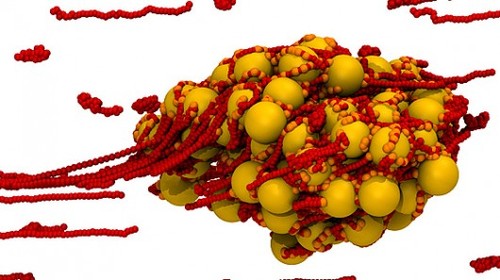Blood Clot Mechanism Will Be Implemented In Self-repairing Materials (+VIDEO)

When you cut yourself your body stops the bleeding and closes off the wound due to blood clotting. A team led by MIT assistant professor of materials science and engineering Alfredo Alexander-Katz is currently studying this complex biological mechanism as a new model for producing self-healing materials. As long as the usual fluid is flowing, it doesn’t become solidify, but during the experiment they discovered just the opposite: the faster the blood flows, the faster a clot forms. The process of blood clotting involves platelets (nucleus-free blood cells acting as building blocks for a blood clot) and a biopolymer molecule called Willebrand factor (a long-chain molecule that floats in the bloodstream, coiled up like a roll of adhesive tape). In case of an injury, as blood flow increases, the flow causes the vWF to stretch out; when coiled up the vWF just rolls by, but when stretched, the exposed sticky surfaces start to catch hold of the platelets and entangle them. MIT team hopes to implement the blood clot mechanism in a new model for a self-repairing material that could find a wide range of applications. The ability to control the process by controlling the rate of flow would make it ideal for everything from inks to self-healing tires.
Via:gizmag.com, MIT
| Tweet |











